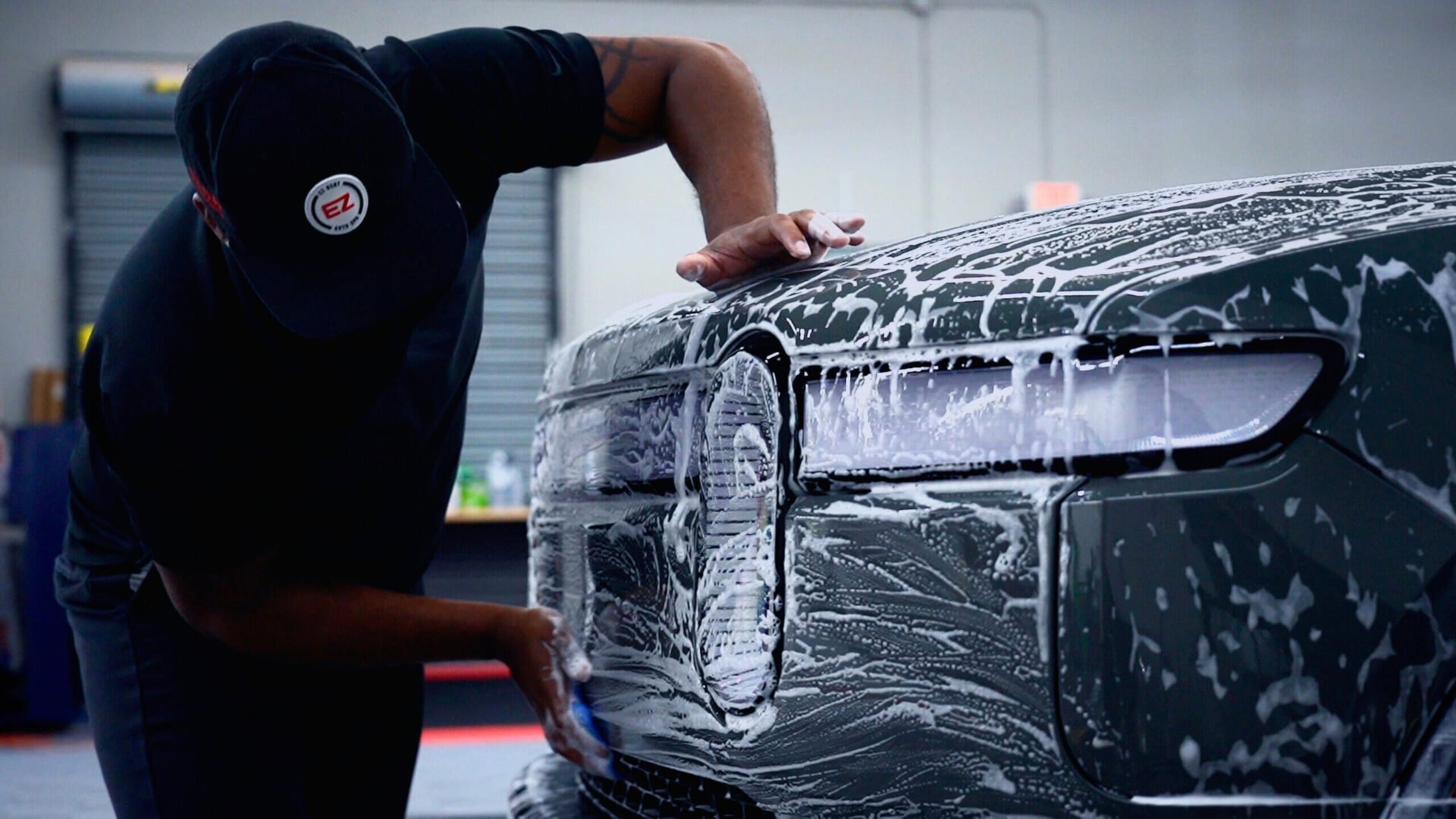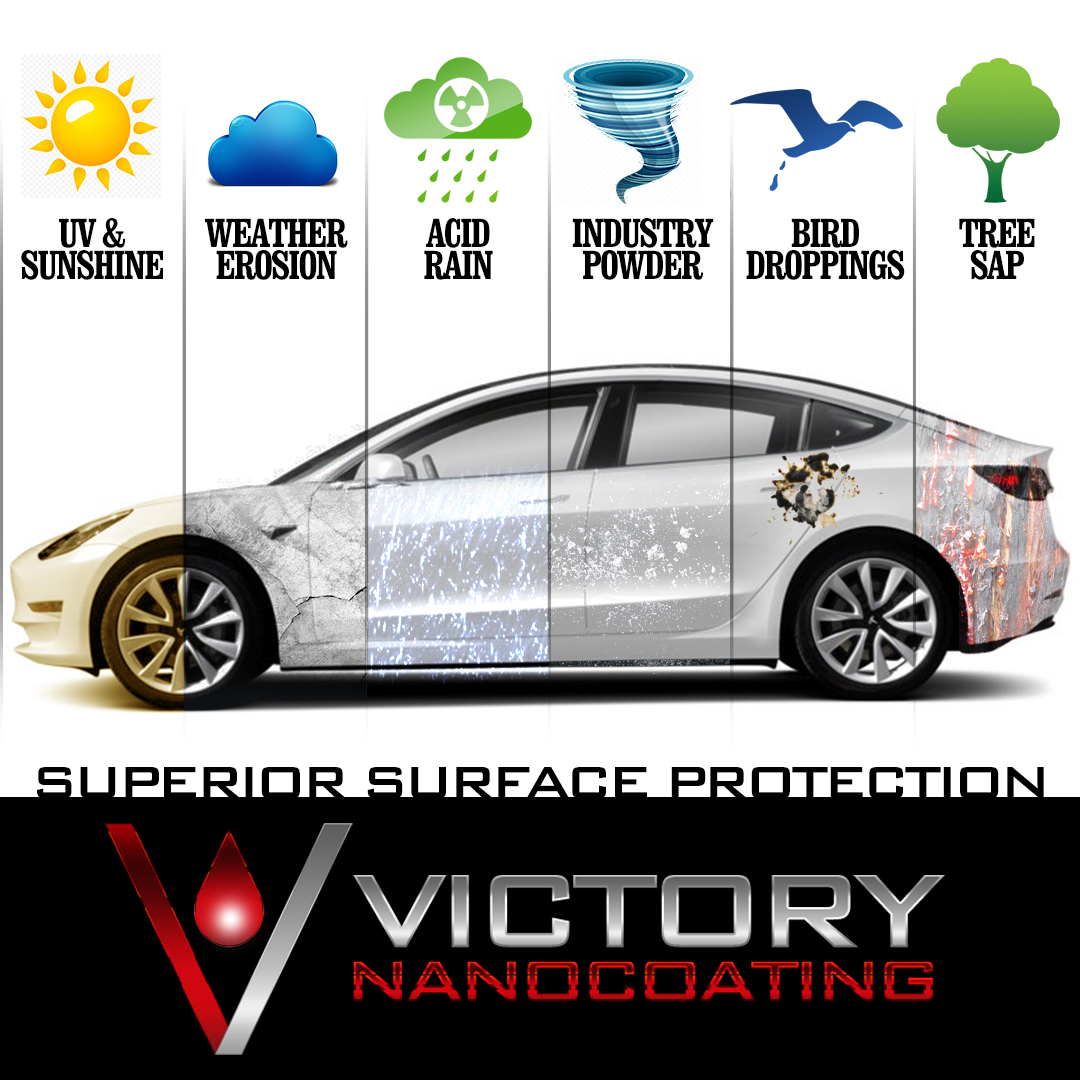Ceramic Coating: A Comprehensive Guide to Protecting Your Car's Paint
Ceramic Coating: A Comprehensive Guide to Protecting Your Car's Paint
Blog Article
Discovering the Science Behind Ceramic Finishing and Its Influence On Car Outlining
The application of ceramic layer in auto describing stands for a considerable development in automobile care, rooted in its innovative chemical properties, primarily silica dioxide and titanium dioxide. As we explore the intricacies of the application procedure and the long-lasting implications for vehicle upkeep, it ends up being clear that the choice of ceramic coating can basically change one's method to car treatment.
What Is Ceramic Finish?
Ceramic finish is a modern option that has obtained appeal in the automobile describing market for its capacity to offer durable protection for lorry surfaces. This sophisticated safety layer is normally composed of silica dioxide (SiO2), which creates a strong bond with the car's paint, developing a resilient guard versus environmental pollutants. Unlike typical wax or sealants, ceramic finishes provide premium resistance to UV rays, chemical stains, and physical abrasions.
The application of ceramic finish involves a precise procedure, where the lorry's surface is completely cleaned up and sanitized prior to the covering is used (Ceramic Coating). As soon as cured, the covering improves the lorry's gloss, deepness, and clarity, offering a showroom-quality surface that lasts for many years. Among the vital advantages of ceramic finishing is its hydrophobic residential or commercial properties, which push back water and dust, making upkeep less complicated and decreasing the frequency of laundries
The Chemistry of Ceramic Finishing
A basic facet of ceramic finishing hinges on its chemical composition, mostly defined by the existence of silica dioxide (SiO2) This substance is essential to the development of a durable, protective layer that bonds chemically to the lorry's surface area. When used, the SiO2 particles undergo a procedure understood as polymerization, wherein they form a network of interconnected structures. This causes a robust, hydrophobic surface that drives away water and contaminants.
Along with SiO2, many ceramic coatings include titanium dioxide (TiO2) and other additives to boost their performance characteristics. TiO2, as an example, adds to enhanced hardness and chemical resistance. The communication between these substances produces a distinct molecular framework that provides a high degree of security against ecological elements such as UV rays, acid rainfall, and oxidation.
Moreover, the application process usually includes a meticulous prep work of the surface area to guarantee optimal bond of the covering. This chemistry not just guarantees a long-lasting surface but likewise boosts the visual charm of the vehicle. Recognizing the intricate chemistry behind ceramic layers is vital for describing experts that aim to supply superior security and durability for their clients' lorries.
Benefits of Ceramic Layer
While outlining experts typically highlight the benefits of ceramic finishes, their advantages prolong much beyond looks. Ceramic layers develop a hydrophobic surface area that drives away dirt, water, and grime, considerably decreasing the frequency of washes and the effort needed to preserve a car's appearance.
Moreover, ceramic coatings boost the long life of the automobile's surface. Unlike conventional waxes or sealants, which may last a few months, ceramic finishings can withstand for years, providing a lasting remedy for cars and truck treatment. This sturdiness translates to set you back financial savings, as owners are less most likely to require regular reapplication.
Additionally, ceramic coatings are immune to chemical spots and etching, which can occur from acidic materials like bird droppings or tree sap. This resistance not only preserves the automobile's looks however also decreases prospective damage - Ceramic Coating. Generally, the investment in ceramic layer uses vehicle proprietors a considerable return in regards to security, convenience of upkeep, and resilient aesthetic charm, making it a significantly prominent selection in the realm of auto detailing
Application Refine Explained

As soon as the surface is properly prepared, the you could try these out ceramic covering can be applied. Making use of an applicator pad, the service technician applies the finish in little areas, working in a crosshatch pattern to make certain even coverage.
Once treated, the ceramic finish forms a strong bond with the paint, supplying boosted protection and a glossy surface. Appropriate application is important to take full advantage of the long life and effectiveness of the ceramic covering.

Lasting Effect On Automobile Care
The long-term influence of ceramic finishing on car care is significant, as it basically changes how proprietors preserve their cars. By developing a long lasting, hydrophobic layer on the car's surface, ceramic layers lessen the adherence of dirt, crud, and contaminants. This residential property decreases the frequency of washing needed, ultimately preserving water and cleansing products.
Furthermore, the UV protection supplied by ceramic finishes helps to avoid oxidation and fading of the car's paint, maintaining its aesthetic allure and resale value with time - Ceramic Coating. This protective obstacle additionally decreases the likelihood of scratches and swirl marks, which are usual problems in typical paint surfaces
In addition, ceramic coverings promote easier upkeep, permitting owners to clean their automobiles with minimal effort. The that site smooth surface makes it hard for contaminants to bond, allowing less complex removal during routine cleansing.
In the lengthy run, the investment in ceramic finishing might bring about cost savings in automobile treatment items and services. In general, the withstanding advantages of ceramic coatings not only enhance the appearance of automobiles yet additionally add to a more lasting and reliable strategy to vehicle maintenance.
Conclusion
In conclusion, the application of ceramic finishing stands for a substantial advancement in vehicle detailing, driven by its distinct chemical structure of silica dioxide and titanium dioxide. This innovation not only improves the aesthetic charm of automobiles however likewise offers robust protection against ecological threats and put on. The lasting advantages, consisting of minimized maintenance frequency and improved sturdiness, highlight the value of ceramic coverings as a vital investment for maintaining lorry look and stability in time.

Report this page